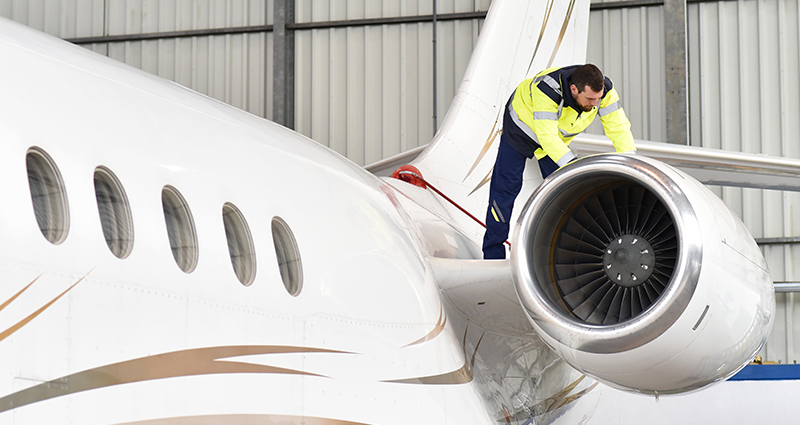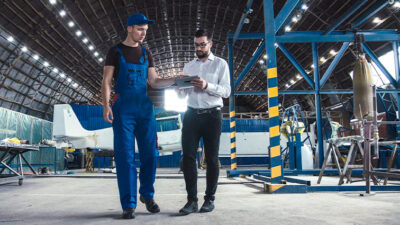Let’s Get Personal (About Risk)

Aviation loves to talk about risk management. Insurance companies, manufacturers, and organizations all fully embrace the concept and know that to make it work on the line, we must get people at all levels and from all functional areas to embrace it. Tools such as the Flight Risk Assessment Tool (FRAT) are noble attempts, but at the core of it all lies the simple fact that people, as individuals, view risk differently.
Let’s travel this road a bit to see what we can discover.
Risk Defined
Personal risk is anything that exposes you to losing something of value. If we are honest with ourselves, we can all identify some things we protect a bit more than others. For me, it’s my collection of vintage vinyl LPs (and even a few 45s). I store them behind glass, handle them with care and treat every one of them as priceless, especially a few of my J. Geils Band and Johnny Cash favorites.
When I compare that to the haphazard way I toss my tools around, which I use far more often, it is difficult to believe the same person owns both. The key here, I think, is to apply the principles I use for my most prized possessions to other things. I’m working on it.
The same holds true in our workplace. When we are working on something we know is potentially dangerous, we care more about the nuances of our performance. We pay attention, we focus and we are alert for threats. But when we grow too confident and complacent, things can bite hard and fast.
Understanding Risk-Takers
There are different types of risk-takers. Understanding where we—and others—are on this spectrum can greatly improve our risk awareness.
Natural risk-takers are adventurists who want to try new things. This often is seen early in life with a child who is always pushing the limits of what their parents deem safe. They get bored with the routine, and as they grow, they typically have one or more high-risk hobbies or engage in high-risk lifestyles, such as aviation. They are impatient to get started on things and often make important risk decisions on the spot. They’re always “up for new things” and tend to ask for “forgiveness, not permission.” But as dangerous as this seems, these people also come with something else.
They seem to have an innate ability—an instinct—that guides them from pushing too far. If they didn’t, evolution would have washed them out of the gene pool long ago, so we can learn from them by giving a LOT of respect to things they won’t do or are uncomfortable doing.
Learned risk takers grow from experience. Their perspective depends on where they learned and from whom. I grew up in the Air Force, and my training has taught me to look for a balance between risk and reward and to seek a “minimum risk required” course of action.
Cultural risk-takers are the most dangerous of all. These people are neither natural nor learned risk-takers, and they get caught up in high-risk groups, teams or cultures. Social acceptance and peer pressure convince them to engage without the natural instincts or learned risk management skills to operate safely. This is very bad.
Naturally cautious people prefer to put their “toe in the water” to test the temperature before jumping into anything. They tend to default to what they know works unless there’s a compelling reason to change. They are wary of new, unproven processes and tools and want to look before they leap (if someone else leaps first, all the better). They are not in a hurry. In the extreme, they may miss out on opportunities for growth in favor of the status quo but are a great counterbalance for risk-takers if they can coexist with them.
What Is Your Personal Risk Threshold?
Everyone has a personal risk threshold—the point where they start feeling uncomfortable about risk. One example that is particularly illustrating to me is how low you are willing to allow your car fuel level to get before filling up.
I am perfectly comfortable with the fuel indicator hovering on the top of the “E” before I really start to look for a gas station, but my wife starts getting nervous at anything below a half tank. As the naturally cautious one in the family, she has never run out of gas. I might have on a few occasions, but I still feel I am getting more out of each tank.
When we make risk personal, we can see it in ways that easily jump the fence when we come into work. This helps us avoid the complacency and attitude that we are securely nested inside multiple safety protections and that our personal approach is not really anything to worry about. Like everything else about human performance, we are all wonderfully unique, and once we realize how this applies to risk, we are better for it.
Dr. Tony Kern, Lt Col, USAF (Ret)
CEO Convergent Performance
A Registered and Certified International Safety Manager (ISSP)
“In the end, darkness is not explained; it is defeated.”
― Tish Harrison Warren, Prayer in the Night
Want to hear more human performance insights from Dr. Kern? Follow his new podcast at https://podcasters.spotify.com/pod/show/onlyhumanwithdrtonykern

Convergent Performance is uniquely dedicated to reducing human error in high risk environments.
http://www.convergentperformance.com/
© 2025 Convergent Performance. All Rights Reserved.
Next ArticleRelated Posts

Mitigating Risk – Amidst the Chaos
There have been more high-profile aviation accidents in the last few months than in the last few decades. As we mourn those we have lost and aim not to make assumptions before final reports are completed, we must focus, personally and professionally, on assessing the risk of something similar happening within our aviation enterprises.

How High Demand Can Lead to Decreased Professionalism
It’s a good time to be an aviation professional. Demand is high, and supply is low. Options are many. Wages are up. For the first time in years, professionals in the aviation industry have the upper hand. But there is a dark underbelly to these good times.

